Working with Acrylic - Routing
Working with acrylic isn't
very hard, but you do have to be meticulous. Straight cuts are important, and
the smoother the edges you achieve, the better your joints will bond. Many people
wonder how sumps are assembled and don't realize that the bonding agent literally
welds the two pieces into one piece with a chemical reaction that melts and
merges the material. You need a triple cut (ATB) blade with 80 or more teeth
for a clean edge.
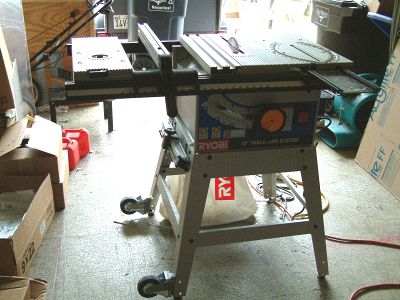 I
use Weld-On #4 for my joints, and #16 for gaps as well as in seams that I feel
need a little more reinforcement. Looking for extended tips at the local hobby
shop, I was able to force a long nozzle on the #16 to better control the amount
of glue coming out.
I
use Weld-On #4 for my joints, and #16 for gaps as well as in seams that I feel
need a little more reinforcement. Looking for extended tips at the local hobby
shop, I was able to force a long nozzle on the #16 to better control the amount
of glue coming out.
Weld-On #3 needs to be applied
with a needle applicator. This fluid is like water in consistency, and feels
cool when dripped on my skin. It doesn't burn or glue flesh together like Super
Glue does. By the way, silicone is not an option when building a sump
or any other acrylic project. If you are working with glass, silicone is the
stuff to use. Not with acrylic.
Usually when I build my projects,
I work alone. All the cuts are made outdoors, along with anything that is routed.
Once my pieces are ready, I bring them in to assemble the unit on my kitchen
table where conditions are stable. Working in the sun, wind, or cold can all
contribute to issues, including general discomfort. If you choose to work indoors,
cover your surface with a sheet of MDF to protect your furnitture. Acrylic can
be quite sharp and will scratch surfaces remarkably well.
A couple of local hobbyists
came over for the weekend to build their own weir and sump. After cutting and
heating their acrylic to bend it to the shape they desired, it was glued. Once
it had time to cure, it needed to be routed. Here is a picture of it before
routing.
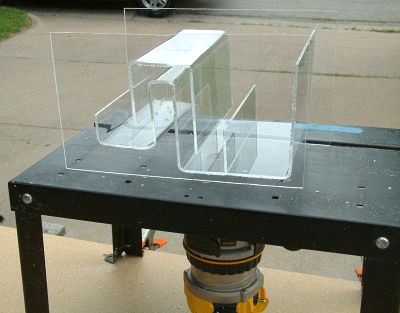
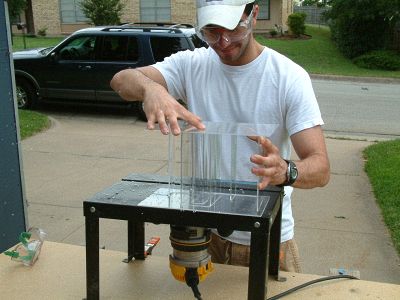
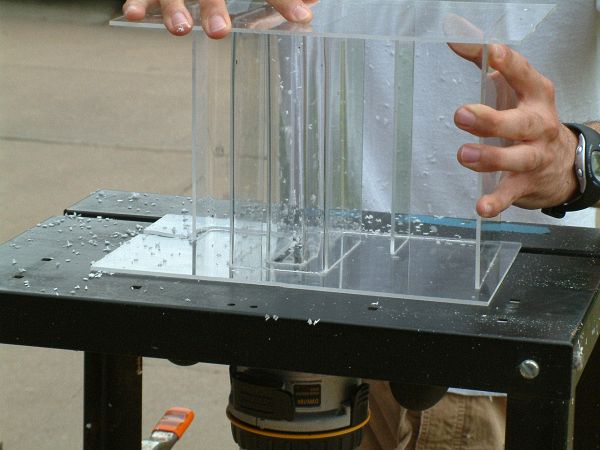
The router table is clamped
to the surface to keep it steady. Router switched on, the project is
worked around the 'bit' to trim off the excess acrylic. Since there is no
room for safeties, mind your hands.
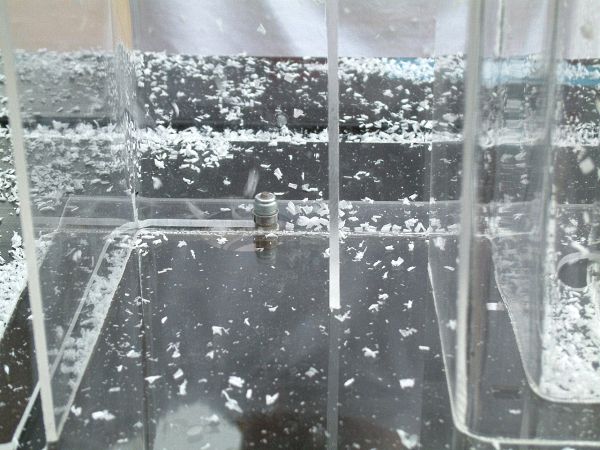
Note the bit is raised up only high enough to trim the thickness of the bottom
piece.
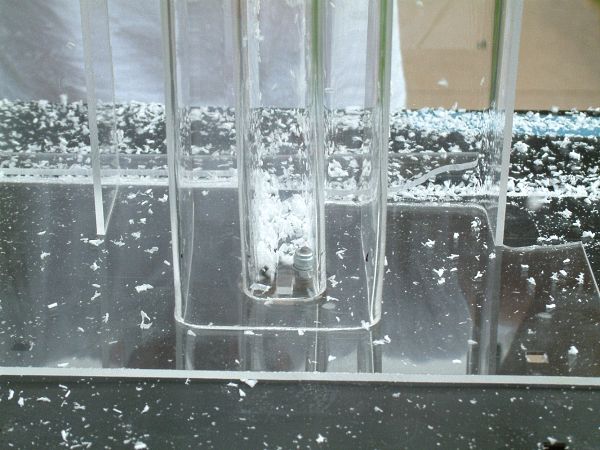
The bearing affixed at
the end of the bit rolls along the edge of the weir, guiding the cutting blade.
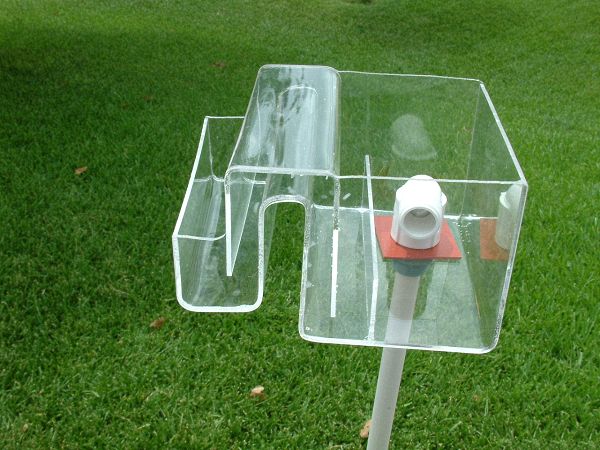
And this is what it looked
like once it was drilled and the bulkhead installed.
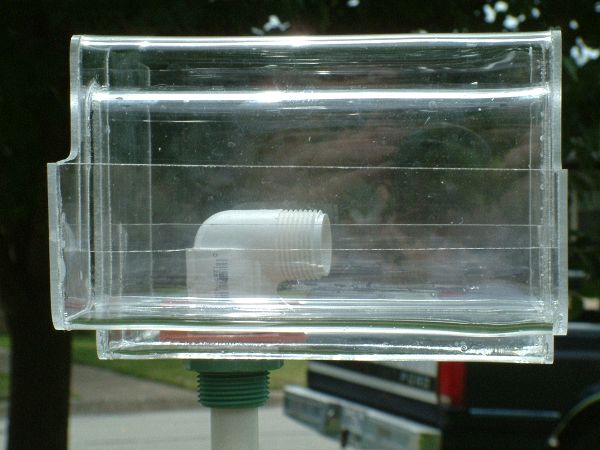
|
When it comes to building
a sump, I like to oversize the pieces, and route them once it is assembled
and cured.
- The bottom
piece is a little longer and a little wider than necessary.
- The front
and back pieces are longer than necessary, but the height is correct.
- The ends
and internal baffles are exactly the same size width-wise.
- End pieces
must be the same height as the front and back pieces.
- Baffles
should all be the same height to maintain proper water levels. Opinions
vary on this, of course.
|
Here is a sump that has been
assembled and ready to be routed. Note the end of the sump - the end piece
seems
recessed, but it is not. All edges extended past the end piece will be routed
off, leaving clean corners and edges.
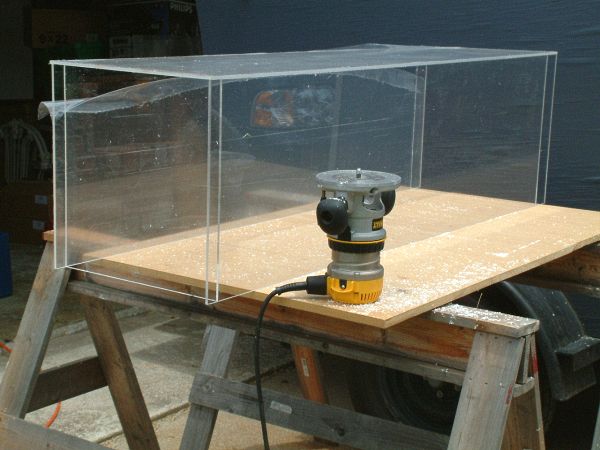

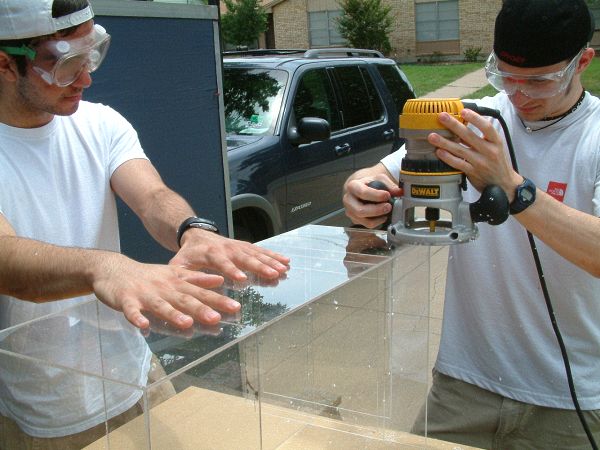
Using a helper to keep
the sump in place is a good idea. The bearing on the
router bit will follow the walls of the sump, providing a beautiful edge once
done.
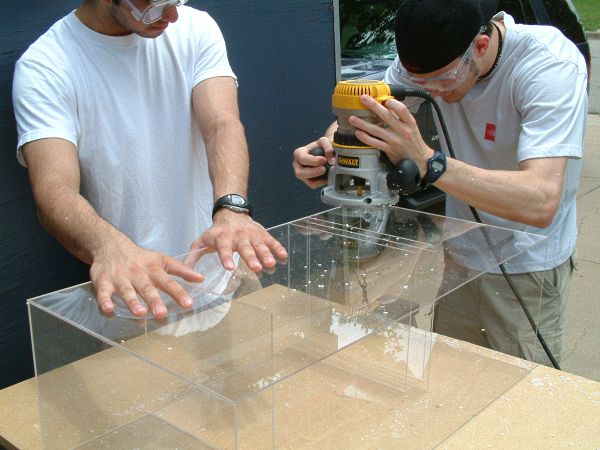
Just finishing the last
corner, you can see this sump is ready to fill with water to check for leaks.
Water testing a 58
gallon Sump
Email Marc
 I
use Weld-On #4 for my joints, and #16 for gaps as well as in seams that I feel
need a little more reinforcement. Looking for extended tips at the local hobby
shop, I was able to force a long nozzle on the #16 to better control the amount
of glue coming out.
I
use Weld-On #4 for my joints, and #16 for gaps as well as in seams that I feel
need a little more reinforcement. Looking for extended tips at the local hobby
shop, I was able to force a long nozzle on the #16 to better control the amount
of glue coming out.









